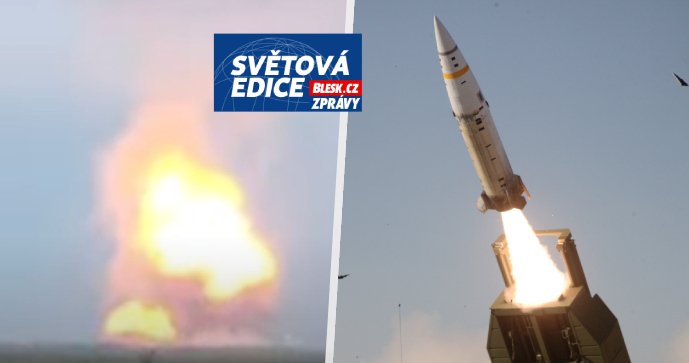Now the Crimean stronghold faces a significant new threat that could neutralize its key role in the 26-month-long war: America’s ATACMS system. After nearly two years of hesitation, the United States in early April delivered versions of these powerful ballistic missiles that can fly up to 300 kilometers — essentially hitting any of more than 100 military targets on the peninsula.
“The ATACMS delivery is a major breakthrough. It could essentially render Crimea militarily worthless.” told RFE/RL Philip Karber, a Washington-based military analyst who focuses on Ukraine.
Crimea is home to the Russian Black Sea Fleet, six air bases, command and control centers, weapons depots, docks, barracks and more. It is also studded with air defense radars and anti-missile systems to protect these facilities. Russia regularly launches missiles, including hypersonic ones, and drones from Crimea into southern Ukraine. Recently, the Ukrainian port city of Odessa has been shelling from the peninsula.
Crimea also serves as a key logistics hub for Putin’s war effort. Russia is transporting critical supplies such as ammunition, heavy weapons, fuel, food and medical equipment from Krasnodar Krai to Crimea by road, rail and ship. Much of the supplies and manpower are moving north across the peninsula to the Russian-occupied parts of the Kherson and Zaporozhye regions.
“At the moment, Crimea is like an unsinkable aircraft carrier for the Russians, launching drones and planes and providing logistical support to their forces in southern Ukraine,” told RFE/RL Ben Hodges, a retired US Army lieutenant general who commanded US forces in Europe.
The Crimean Bridge is closing
Ukraine had already struck several key military targets on the peninsula — including air bases and the 19-kilometer-long Crimean (Kerch) bridge, the only physical link to Russia proper — even before the United States approved the delivery of the ATACMS systems on April 24.
Although Russia regularly closes the bridge due to threats, Moscow continues to deliver significant supplies to Crimea via this link, stated Karber. The ships also transport cargo to Sevastopol, the headquarters of the Russian Black Sea Fleet located on the southwestern coast of the peninsula.
For months, President Volodymyr Zelenskyy has been urging the Joe Biden administration to send longer-range ATACMS, which carry a 230-kilogram warhead, to strike military targets far behind Russian lines, particularly those in Crimea. Ukraine produces only a small number of long-range missiles, but hopes to start increasing their production this year.
💥Last week, Ukraine used long-range ATACMS missiles delivered in secret to destroy multiple S-400 systems and much more at the Russian airfield in Dzhankoi, occupied Crimea.
New York Times reports over 100 such missiles were already delivered to Ukraine before the House vote. pic.twitter.com/xh1h3WJhcu— Igor Sushko (@igorushko) April 25, 2024
Last fall, the United States sent a shorter-range version of the ATACMS to Ukraine with a range of 100 miles (165 kilometers), which disperses cluster munitions when detonated. Ukraine successfully used them for the first time in October against targets in eastern Ukraine.
During his visit to the Munich Security Conference in February, Zelenskyy said he showed US officials which targets he wanted to hit with ATACMS.
Shortly after receiving these longer-range missiles earlier this month, Ukraine reportedly used them on April 17 to strike the Zhankoy air base in northeastern Crimea, damaging Russian helicopters, the S-400 strategic surface-to-air platform (Russia’s most advanced air defense system) and an aerial observation complex used as a command and control center. The reports could not be independently verified.
The occupying governor of Crimea, Sergei Aksyonov, has already warned that ATACMS missiles in the cartridge version are falling on the peninsula: “After the ATACMS missiles were shot down, unexploded submunitions were scattered. If you find this ammunition, do not collect it, do not approach it, call the Ministry of Emergency Situations and the Ministry of the Interior,” he wrote in a telegram.
The Russian Ministry of Defense also reported on such strikes on Tuesday: “Russian air defense shot down ten Ukrainian drones, six US-made ATACMS missiles and two French-made HAMMER guided aerial bombs,” it said without detailing where it occurred. Kremlin spokesman Dmitry Peskov commented on the news about the delivery of missiles to Ukraine, saying that the “special military operation” will achieve its goals anyway, but it will be more problematic for Ukraine.
Obsolete rockets
The United States did not say how many longer-range ATACMS missiles it has already sent to Ukraine or how many more Ukraine might receive in the coming months. Citing unnamed US officials, the New York Times reported that more than 100 longer-range ATACMS had been delivered to Ukraine. Multiple ATACMS may be required to destroy or seriously damage a single target.
Colby Badhwar, independent defense analyst, at Twitter stated that the United States could probably provide Ukraine with 200 long-range ATACMS missiles. Others are in US arsenals past their use-by date, but some could probably still be used, they judge.
Ukraine also has other Western-made missiles, although their stockpile is dwindling. Last year, the United Kingdom sent Storm Shadow precision missiles to Ukraine, which can hit targets up to 250 kilometers away. Last week, London announced it would send another.
Over ten days in September 2023, Ukraine used its Storm Shadow stockpile to strike two targets in Crimea: a shipyard and the headquarters of the Black Sea Fleet in Sevastopol. Ukraine has destroyed or damaged some 24 Russian vessels in the Black Sea – including the flagship Moskva, which was sunk in April 2022 – using a combination of domestic and Western weapons. Less than two weeks after the strike on the headquarters, Russia withdrew most of its Black Sea fleet from the peninsula to the Russian port of Novorossiysk. “The Ukrainians have already verified in Crimea what a handful of precision weapons can do against the Russians,” Hodges said, referring to the Storm Shadow strikes in Crimea and the subsequent Russian withdrawal.
In an interview with the Washington Post last month, Zelenskyy said that ATACMS would allow Ukraine to expel the Russian air force from the peninsula. “When Russia knows that we can destroy its fighters, it will not attack from Crimea,” he said. “It’s like a naval fleet. We pushed them out of our territorial waters. Now we will push them out of the airfields in Crimea.”
Better than Storm Shadow
Badhwar said ATACMS, which move much faster than Storm Shadows and can reach their targets in minutes, are better suited in situations where time is of the essence – against targets such as mobile air defense systems, artillery, missile launchers, aircraft on land or supply.
The German Taurus guided missile would be more suitable against the Kerch Bridge. German Chancellor Olaf Scholz has so far resisted pressure to provide the powerful missile to Ukraine, although Western officials hope the US decision to supply ATACMS will convince Berlin as well.
Now that Ukraine is armed with ATACMS, Russian forces in Crimea have nowhere to hide, Hodges says. According to him, the Ukrainian armed forces “know every square meter” of the peninsula. “The first big step to liberate Crimea is to make it untenable. And the long-range precision strike capability will provide Ukraine with an opportunity to achieve this,” Hodges said. “You don’t have to kill all the Russians. Just make sure they don’t have fuel, ammunition and food.”
And according to him, Crimea will be the decisive field of the entire war – whoever controls it will win. If it succeeds in isolating it from supplies, missile and drone attacks from the peninsula will decrease, and Russian troops in the occupied south will also face shortages. Ukraine could then potentially free up troops from the south for heavier fighting in the east. “It’s obviously going to have a broader impact than just getting the Russians out of there,” Hodges told RFE/RL. “It will have an effect across the battlefield, both psychologically, logistically and physically.”
View full online











